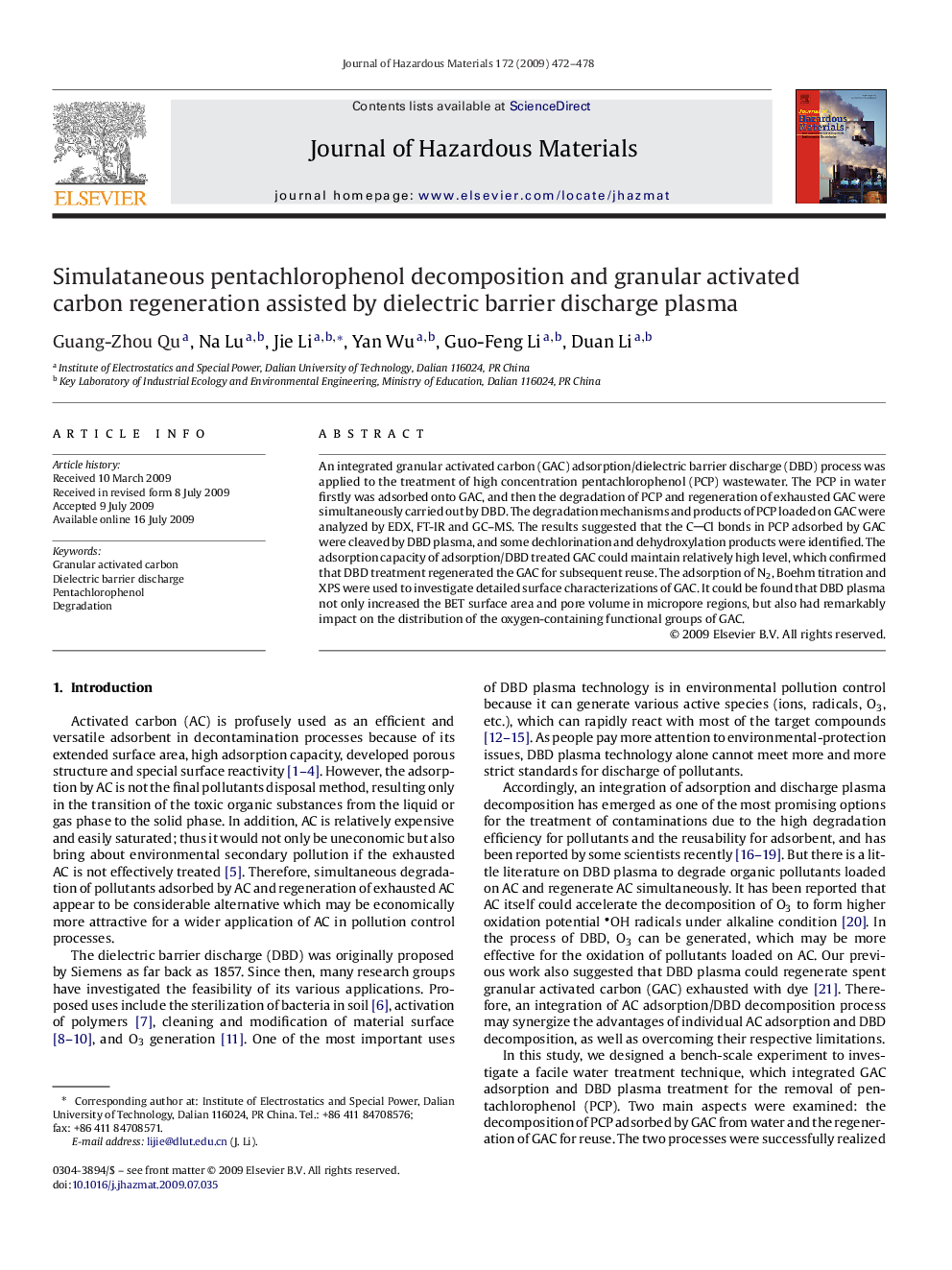| Article ID | Journal | Published Year | Pages | File Type |
|---|---|---|---|---|
| 581089 | Journal of Hazardous Materials | 2009 | 7 Pages |
Abstract
An integrated granular activated carbon (GAC) adsorption/dielectric barrier discharge (DBD) process was applied to the treatment of high concentration pentachlorophenol (PCP) wastewater. The PCP in water firstly was adsorbed onto GAC, and then the degradation of PCP and regeneration of exhausted GAC were simultaneously carried out by DBD. The degradation mechanisms and products of PCP loaded on GAC were analyzed by EDX, FT-IR and GC-MS. The results suggested that the CCl bonds in PCP adsorbed by GAC were cleaved by DBD plasma, and some dechlorination and dehydroxylation products were identified. The adsorption capacity of adsorption/DBD treated GAC could maintain relatively high level, which confirmed that DBD treatment regenerated the GAC for subsequent reuse. The adsorption of N2, Boehm titration and XPS were used to investigate detailed surface characterizations of GAC. It could be found that DBD plasma not only increased the BET surface area and pore volume in micropore regions, but also had remarkably impact on the distribution of the oxygen-containing functional groups of GAC.
Related Topics
Physical Sciences and Engineering
Chemical Engineering
Chemical Health and Safety
Authors
Guang-Zhou Qu, Na Lu, Jie Li, Yan Wu, Guo-Feng Li, Duan Li,
